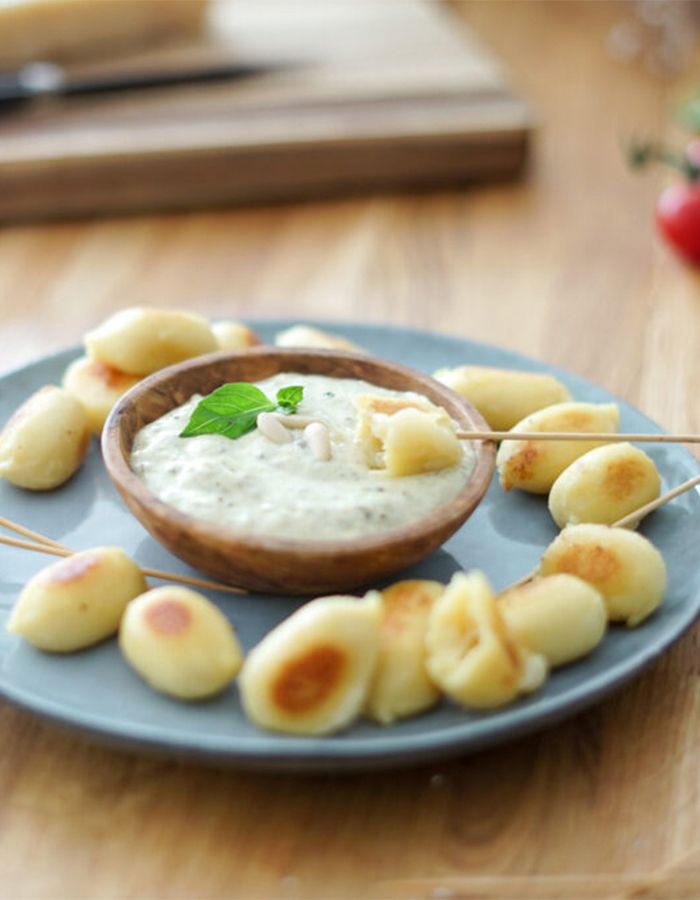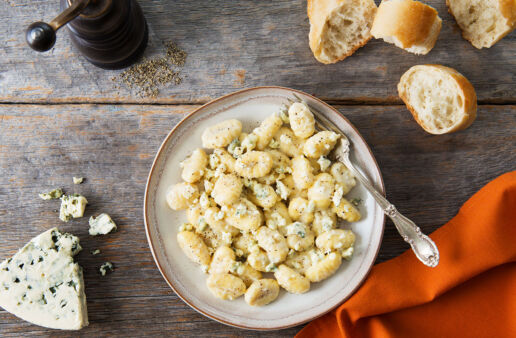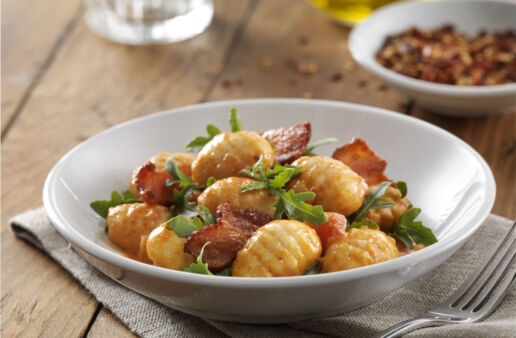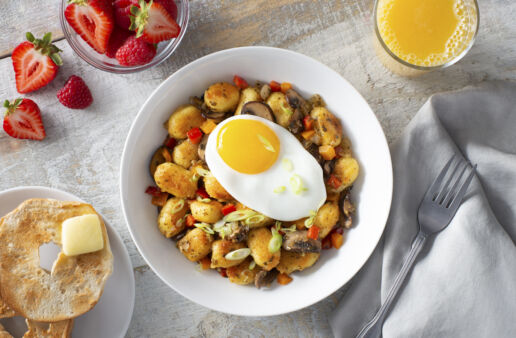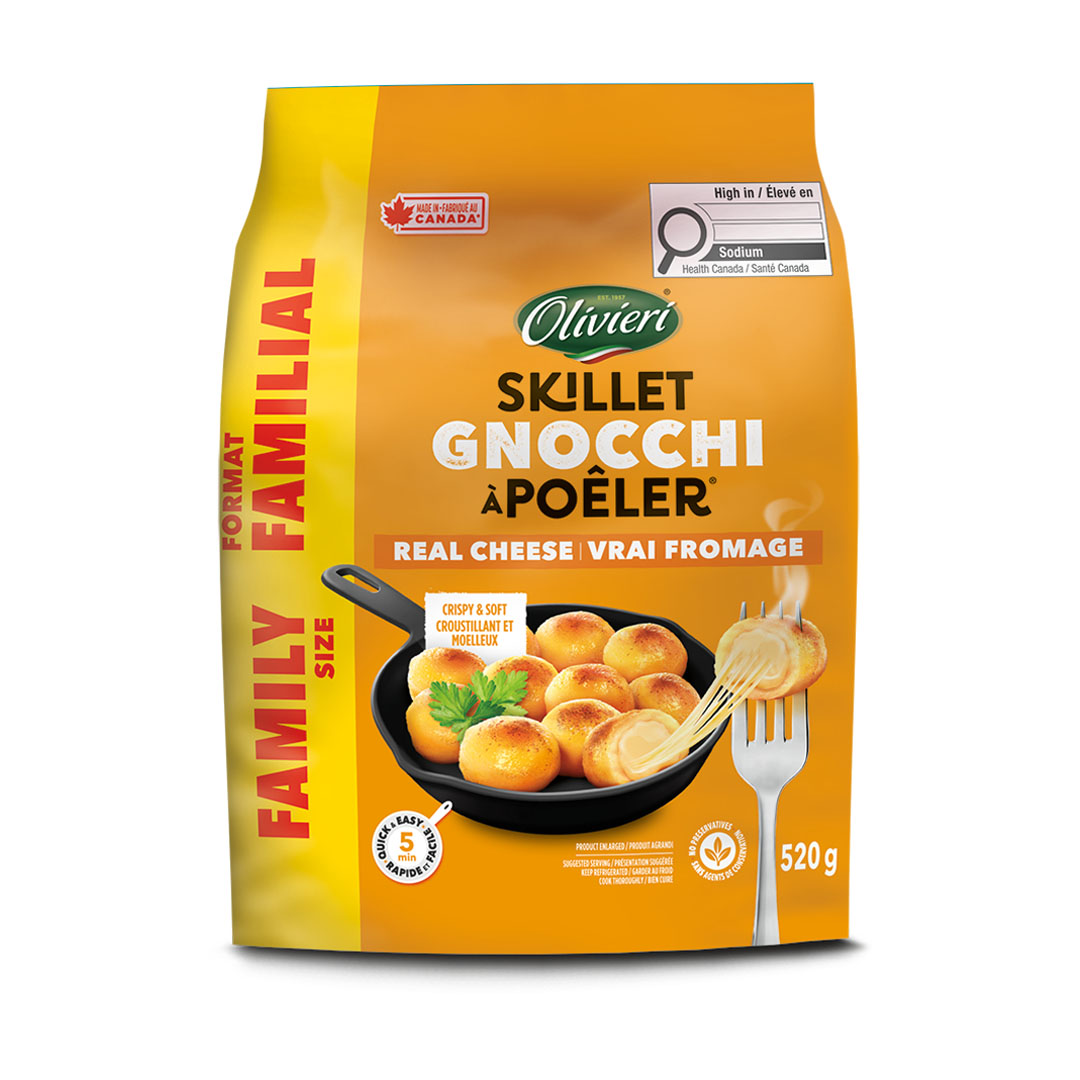
Cheese-Filled Skillet Gnocchi With a Creamy Pesto Dip
 4-6
4-6
 10
10
Cheese-Filled Skillet Gnocchi With a Creamy Pesto Dip
Instructions
Step 1
Melt a knob of butter in a pan. Add the Olivieri® gnocchi and warm over medium heat for 5 minutes, until they are golden brown, and the cheese starts to ooze out.
Step 2
In a bowl, mix the white cheese with the pesto and the lemon juice. Add pepper and salt to taste.
Step 3
Serve the gnocchi with the dip. A super-simple but super-tasty recipe!
Recipe Tip
The details make all the difference
For an original touch, replace the white cheese with ricotta. To enhance the presentation, sprinkle with chopped basil, toasted pine nuts and lemon zest.
Other Cheese Filled Gnocchi Recipes
If you enjoyed this recipe, why not check out one of our other recipes which utilise our Olivieri® Cheese Filled Skillet Gnocchi such as this Gnocchi with Lemon, Ricotta and Asparagus dish. Sautéed with tender crisp asparagus, garlic, lemon zest, Parmesan and a dollop of ricotta cheese, this dish has a lovely creamy texture and is packed with taste.
This Loaded Bacon and Egg Breakfast uses Olivieri® Cheese Filled Skillet Gnocchi as a base. What a way to start your day!
For a fun dish that works great for both kids and adults, you can make this Skillet Cheese Gnocchi With Tomato Basil Sauce. All it takes is just 3 ingredients and 10 minutes to prepare! This dish can work great as a snack or as an appetiser if you are entertaining guests.
Find out how to cook gnocchi in various ways.
What is White Cheese?
Typically produced from cow’s milk, white cheese is a group of cheeses that includes a wide variety of traditional cheeses like Mozzarella, Feta and Ricotta.
Is White Cheese the Same as Yellow Cheese?
Although the two are very similar in terms of taste, due to the differences in production, there are some light differences between these two cheeses, in addition to colour. Firstly yellow cheese has a softer texture and higher fat content, whereas white cheese is usually drier and has a more crumbly texture. Due to its texture, white cheese is easier to spread over crackers or bread.
In terms of flavour, yellow cheese normally has a stronger tangy flavour, while white cheese has a saltier, milder taste. This is due to the fact that when producing white cheese, the curds are drained for a shorter amount of time.

